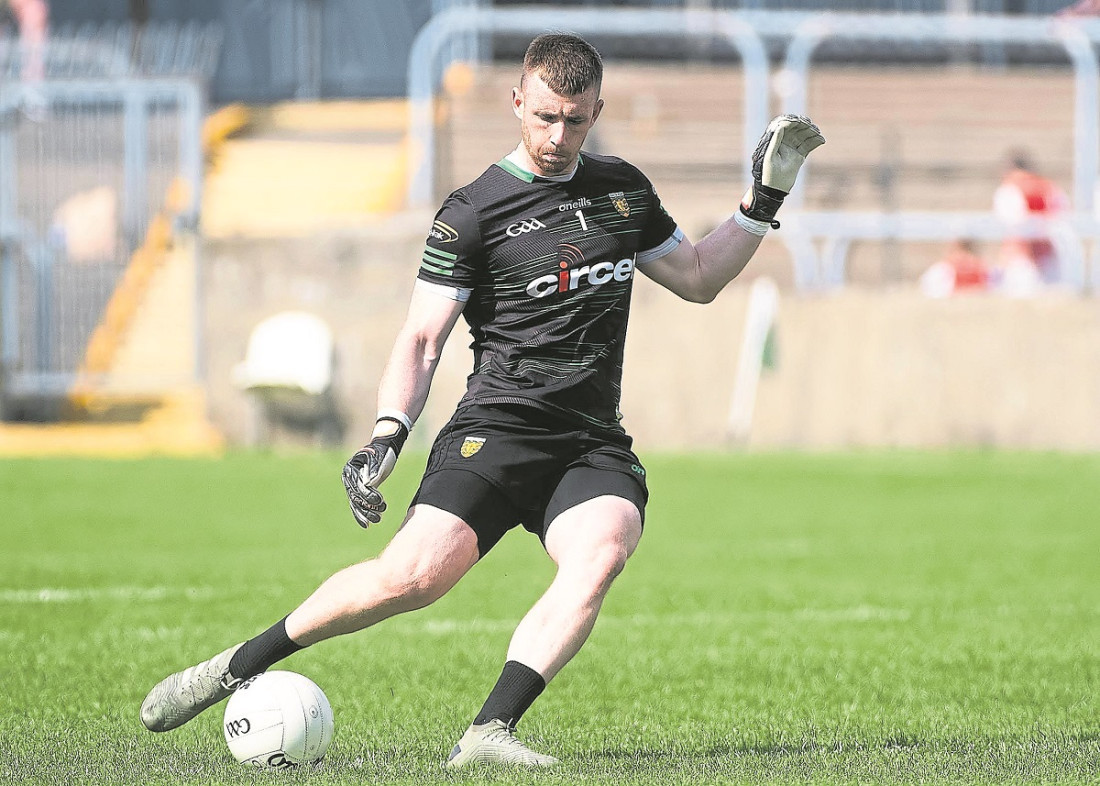By Patrick Morrison
WITH the newest ‘fly goalie’ phenomenon becoming ever present within Gaelic football, I regularly get asked for my thoughts on the evolution of the goalkeeping position. First and foremost I explain that is natural and something that should be embraced and nurtured rather than shunned because allowing it to evolve without resistance will encourage it to run its course quicker and develop into whatever stage comes next.
Secondly, I explain how the evolution of the goalkeeping position mirrors the evolution of football itself. The game of Gaelic football has seen massive changes over the years both on and off the field of play. From the speed/intensity the game is played at to the skill levels involved to the conditioning of players into athletes the changes on the field have been immense. Off the field the structures, expenditure and indeed the fan following of teams has grown with that.
In the 1990’s the GAA invested a monstrous amount of money into improving coaching within Gaelic games and as a direct result of this we have seen our games evolve at rates that maybe most GAA enthusiasts cannot comprehend. What I mean by this is they are still getting to grips with one evolutionary stage before another comes along for them to become comfortable with and this causes an internal conflict within the person between each stage.
In the very beginning, Gaelic games were seen as a test of manliness whereby scoring played second fiddle to getting ‘stuck in’ and showing how tough one was with tough tackling and robust football. As the years progressed and the competitions became more appealing, teams began to improve their skills and the game evolved into a more ‘Catch and Kick’ style of football. In this style whenever possession was gained the ball was immediately transferred as far down field as possible with regular contests between players.
In the 1960’s, the famous Down team evolved this further into ‘Pass and Move’ whereby the aim was to pass intentionally to a teammate and immediately support looking for scores. This football included kick passing but as the years rolled on the amount of hand passes in a game increased year on year. Entering into the 1990s, as the coaching revolution was taking place, the game had become balanced between hand passing and kick passing.
As the coaching investment began to take effect the game started to involve more tactical approaches both in defence and attack. Teams had strategies on both sides of the ball to maximise their potential while also counteracting their opponents. During the 2000’s there was a period of ‘Playing At Angles’ where teams used angled runs or passes both long and short, and then supported these with runners off the shoulder.
From here the game developed into a possession based game whereby teams tried to stifle their opponents possession of the ball in an attempt to reduce their impact on the game. This included the so-called “Blanket Defence” which in reality should have been called ‘Organised Defence.’ The Romans didn’t conquer most of the known world by being disorganized.
In the 2010’s, the game developed into a Counter Attacking game as most teams became organised in defence and looked to hit teams on a fast break before they could get into their defensive structure. From here the game developed into a Transition based style whereby teams began to defend the goal less and attack the ball more. More pressure was starting to be applied onto the ball wherever it was on the field looking for the turnover.
With all of these evolutions today’s top teams and coaches have realized that the most important feature of today’s game is Field Position. This is why phrases like Scoring Zone, Drop Zone, Transition Zone, Tackle Zone and Possession Zone (to name a few) have come from. Teams are intent on moving the ball from one zone to the next ultimately looking to get into the scoring zone in the most efficient manner to produce a percentage score.
The object is not to ensure that teams now maximise their attacking efforts in the most effective manner while on the defensive side of the ball teams now set up, sometimes with 15 men behind the ball, to ensure that their opponents are kept out of certain field positions (scoring zone or transition zone). Teams will analyze other teams and look at where they can attack the ball in their opponent’s weakest field position. This may be in their opponent’s defensive zone, kickout zone or even the scoring zone.
This is why we see teams with 15 in defence or dropping immediately off kickouts because the modern game has become a Positional Game whereby gaining possession is now less important than gaining the better field position than your opponent.
The top teams are already evolving away from this, because they have to in order to counteract it. This stage of evolution is, like the goalkeeper, natural and if left alone will naturally evolve into something else within the next few years. All we have to do is keep up with the evolution because “Football Will Always Find A Way!”
Email: pmgoalkeeping@hotmail.com
Facebook: @MSoG11
Twitter: @MorSchGk
Receive quality journalism wherever you are, on any device. Keep up to date from the comfort of your own home with a digital subscription.
Any time | Any place | Anywhere












